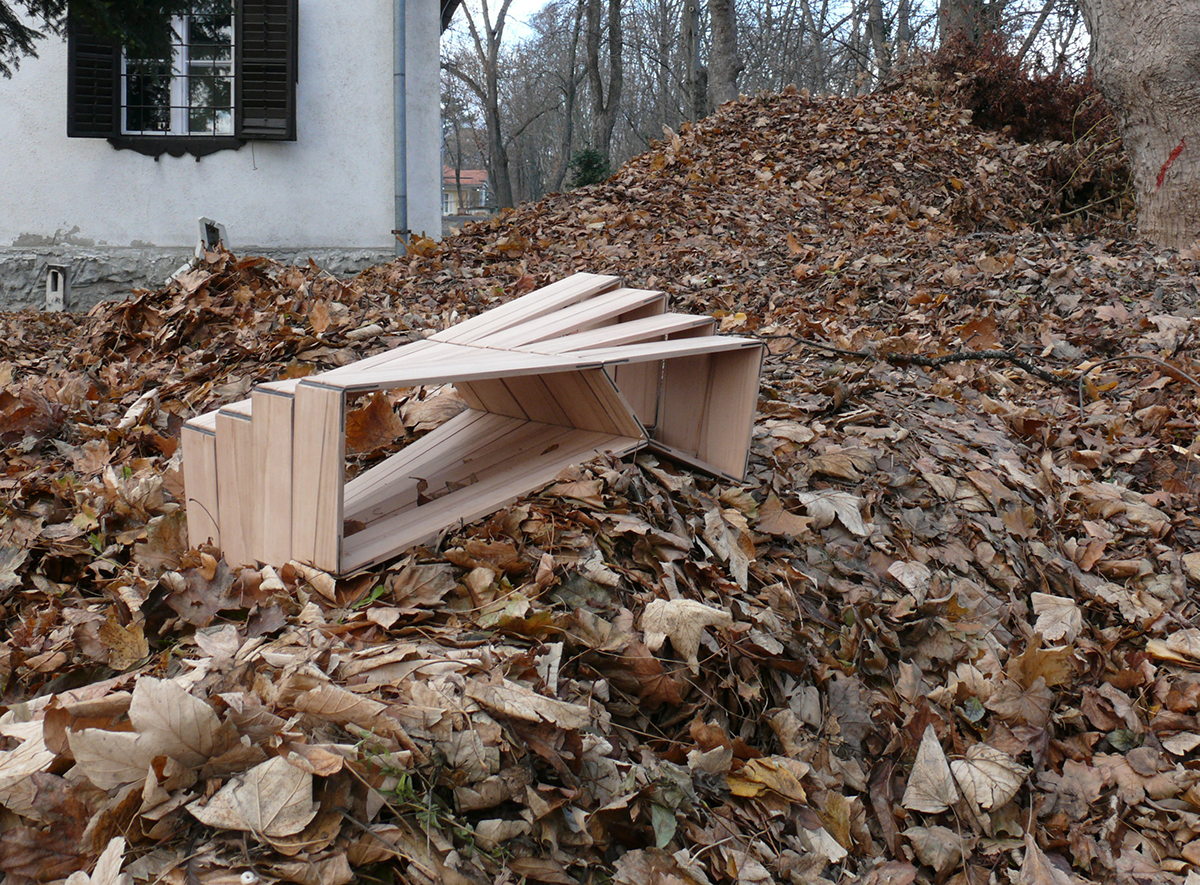
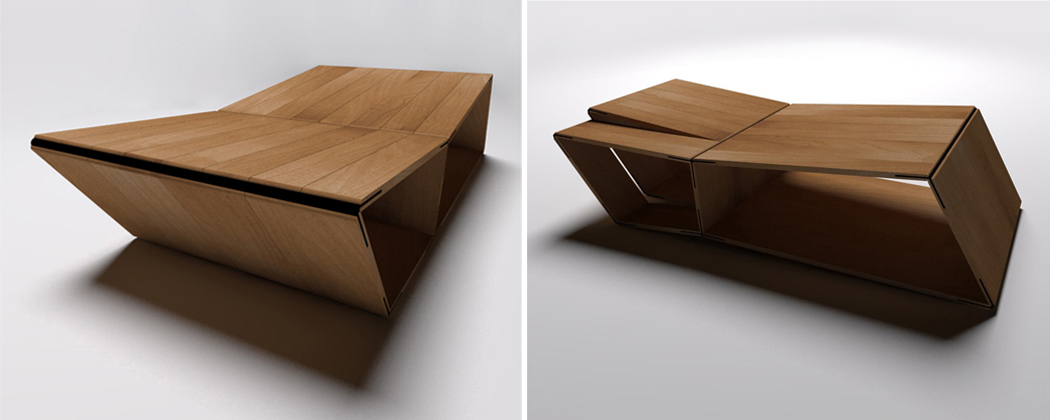
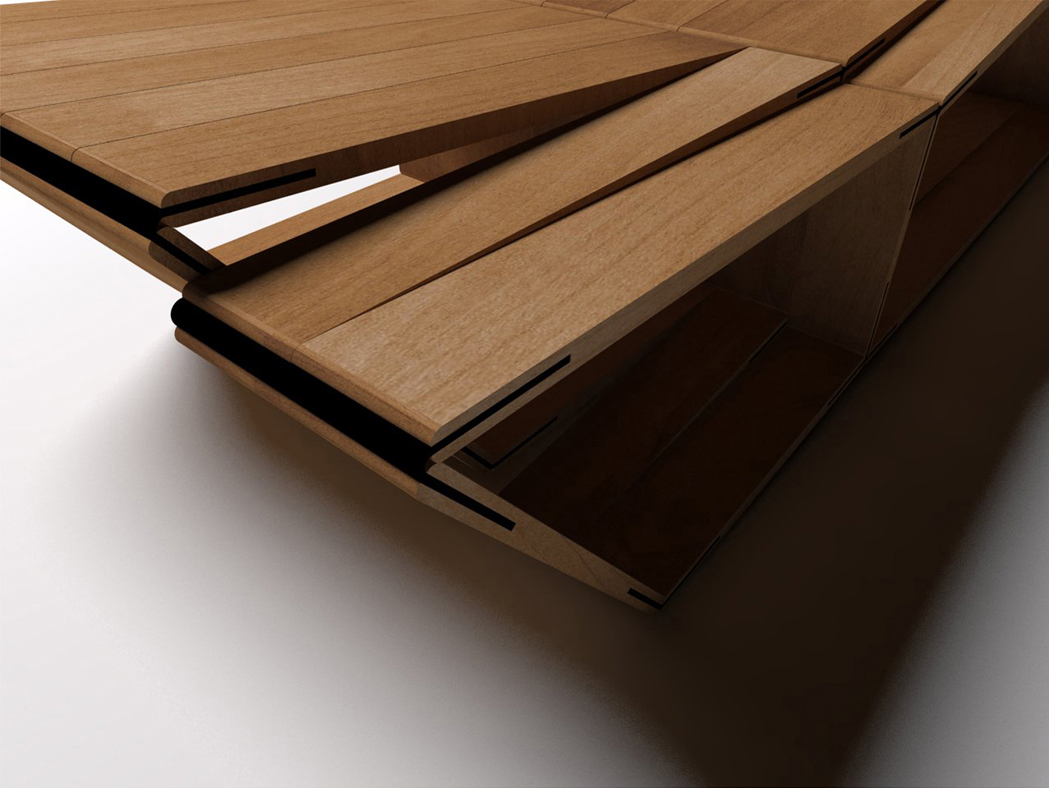
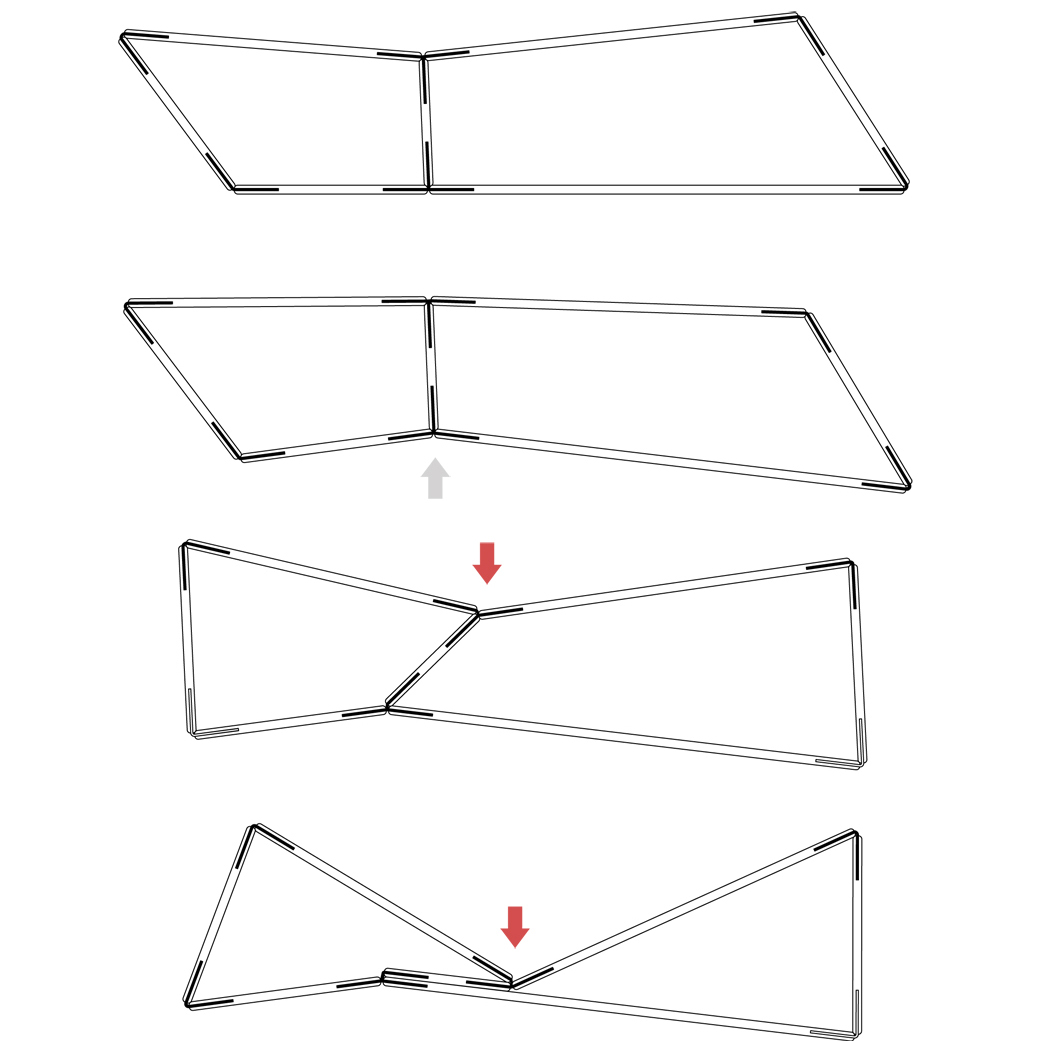
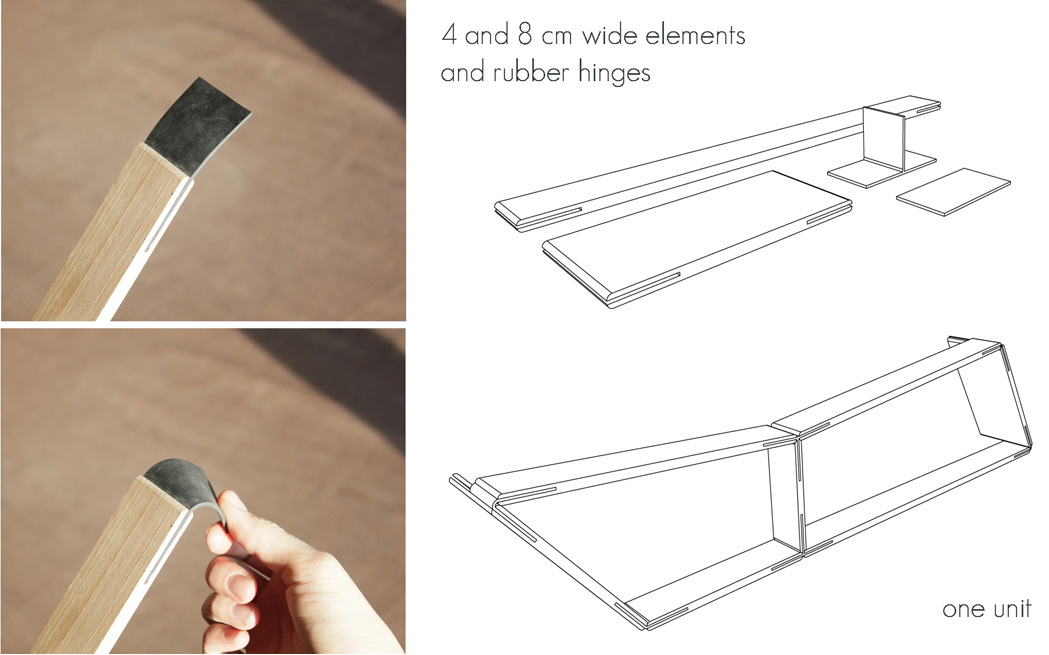
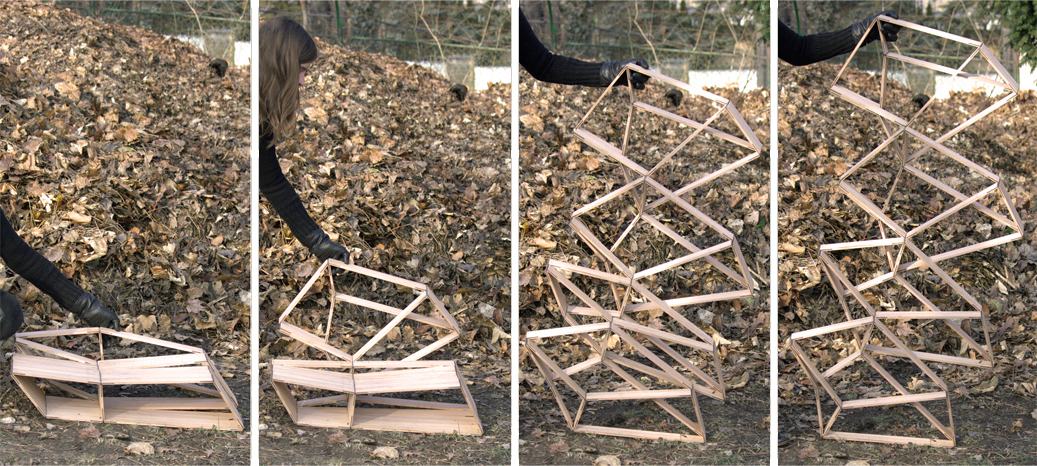
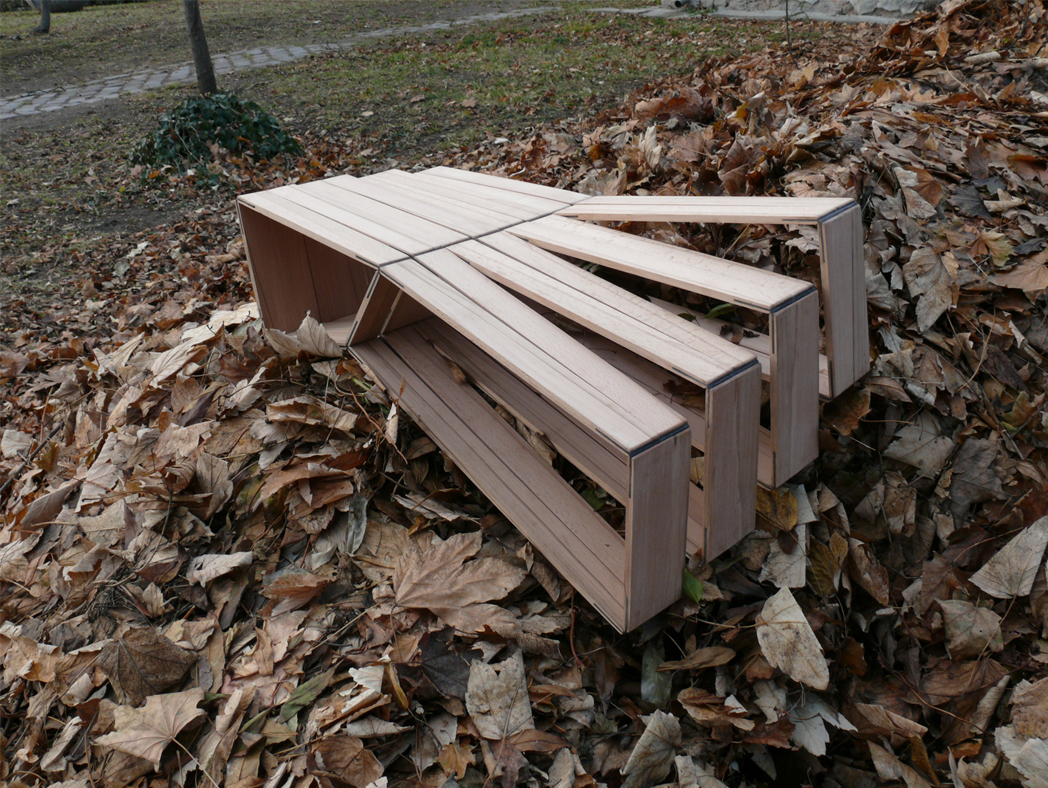
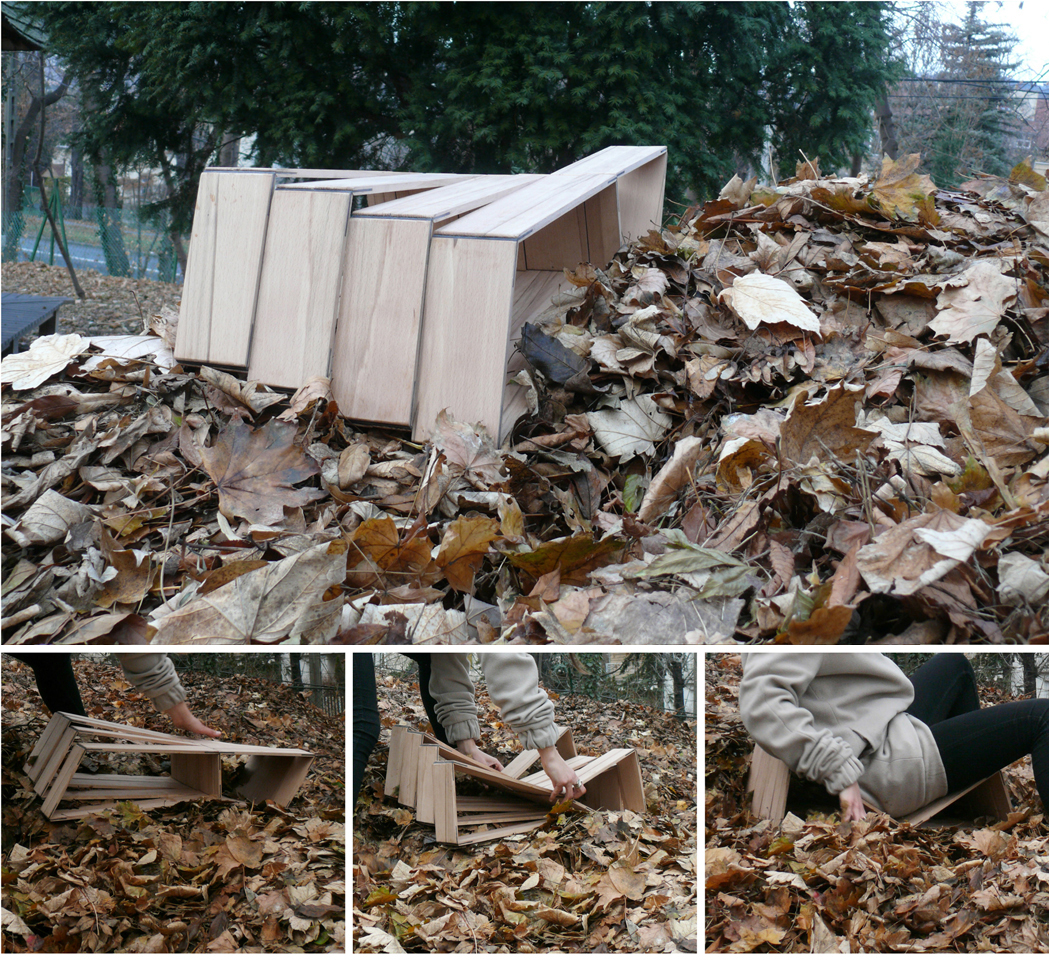
STRUCCHAIR adaptive seating
The project, instead of focusing on the general problems of chair design, tries to approach the question from a different angle. The chair itself doesn’t follow the general design grid, and it is not made for a traditional design environmental setting, hence the design process is not defined by the usual guidelines of chair design. This can only be done in a new, and innovative way.
The chair is designed to fit an irregular, and ever-changing environment produced by nature: the ground. Since the surface of the terrain is always different, the shape of the chair couldn’t be static either.
Strucchair is a structure, which consists of several kinetic units put together sideways, whose number can be further increased. The following chair is only a variant, since based on this structure various forming methods are possible.
Strucchair is a low-profile seat for one. during the design phase, while focusing on the ability to fit the changing environment, the user’s comfort was also taken into consideration. In order to achieve great comfort, it is crucial, that the chair not only fits the environment, but the user’s body as well. That’s how this two-directional adaptive structure was born. The chair - in it’s static stage - consists of two quadrilateral prisms, connected by their joint side. When it starts to move the independent components of the structure become separated from each other. When being seated on, the components in the middle make the two rectangular prisms static by tilting towards the bigger part, but due to the independence of the components, the seat remains comfortable.
Strucchair is a hardwood structure built from lath elements organized in kinetic geometric shapes. One unit means two different sized quadrangles with a joint side. The components are 4 or 8 cm wide and vary in length. in order to help the movement of the structure, the ends of the laths are rounded. There is a slot cut at the ends of the laths, this is where the rubber hinges, which connect the components fit in. the hinges are rubber stripes, Y shaped in the middle of the unit. The units are connected in an accordion-like structure, meaning that the upper and lower 4 cm wide single elements are connected by 8 cm wide double elements in the middle, and on the sides. The components that hold the structure together on the sides are shifted by one element comparing to the ones in the middle, resulting that every unit can move along it’s own axis, independently from the others.
